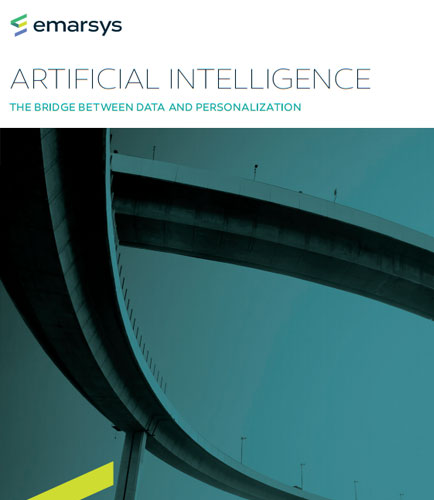
PROCESSING. PLEASE WAIT...


White Paper: Emarsys
Today, artificial intelligence (AI) has become one of the most powerful marketing tools by actually delivering on the promise of 1:1 marketing. Instead of merely pushing the key marketer challenges further downstream, AI actually overcomes them.
Using advanced machine learning algorithms, AI technology solutions are being built to take over most of the tedious and time-consuming tasks that marketers struggle with on a regular basis.
This whitepaper provides insights on how artificial intelligence helps to fulfill the vision of true 1:1 marketing by bridging the gap between data and personalized customer experiences.
Revolutionizing the marketer’s role
Bridging the marketing gap with Artificial Intelligence
Product recommendations: How Artificial Intelligence benefits marketers
AI at work: Incentive Recommendations

By: CA Technologies
Behavior-Driven Development (BDD) seeks to foster collaboration between the business and IT, inspired by the notion of a ‘ubiquitous language’, taken over from Domain Driven Development. As modern organizations rely increasingly on software that can provide value to its customers, IT teams are required to deliver fully tested software that delivers on changing business needs, faster, and for less. This whitepaper provides insights on how behavior driven requirements can be accurately formulated so that they can be successfully implemented in development. It examines how these core principles of fostering collaboration and clarity between the business and IT can be best implemented during the development lifecycle. This whitepaper highlights: Incompleteness in Behavior-Driven Requirements Model Based Testing and BDD Flowchart Modeling as a Part of BDD Quickly and Easily Respond to Change
By: CoreOS
Kubernetes is Google’s third container management system that helps manage distributed, containerized applications at massive scale. Kubernetes automates container configuration, simplifying scaling, and managing resource allocation. It comprises a rich set of complex features, and understanding this new platform is critical to the future of your organization. Kubernetes also manages their lifecycles, and maintains and tracks resource allocation in a cluster of servers. This whitepaper provides insights on how to address these challenges, as many organizations are now turning to Kubernetes to help orchestrate and manage their containers in production, development and test environments. Inside this Kubernetes White Paper: Kubernetes as container orchestration Basic Kubernetes architecture The benefits of Kubernetes What to consider when deploying Kubernetes


 2025 All Rights Reserved | by: www.ciowhitepapersreview.com
2025 All Rights Reserved | by: www.ciowhitepapersreview.com